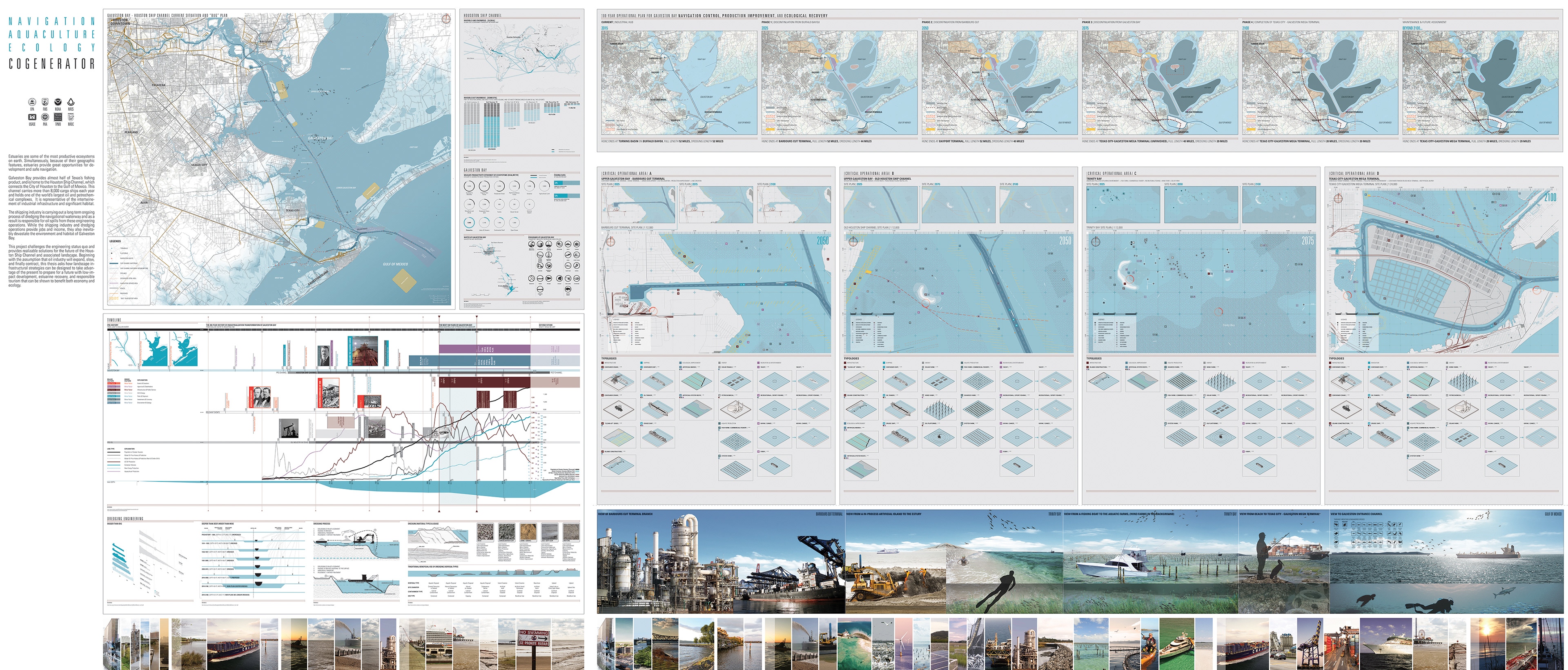Retreat & Rendezvous
University of Toronto, John H. Daniels Faculty of Architecture, Landscape, and Design
Department of Landscape Architecture
Landscape Architecture VI
Design Studio Thesis
Department of Landscape Architecture
Landscape Architecture VI
Design Studio Thesis
Thesis: Hui Chen
Advisor: Fionn Byrne
Advisor: Fionn Byrne
Description:
Estuaries are some of the most productive ecosystems on earth. Simultaneously, because of their geographic features, estuaries provide great opportunities for development and safe navigation. Galveston Bay provides almost half of Texas’s fishing product, and is home to the Houston Ship Channel, which connects the City of Houston to the Gulf of Mexico. This channel carries more than 8,000 cargo ships each year and holds one of the world’s largest oil and petrochemical complexes. It is representative of the interconnections of industrial infrastructure and significant habitat. The shipping industry is carrying out a long term, ongoing process of dredging the navigational waterway and is responsible for oil spills from these engineering operations. While the shipping industry and dredging operations provide jobs and income, they also inevitably damage the environment and habitat of Galveston Bay. This project challenges the engineering status quo and provides realizable solutions for the future of the Houston Ship Channel and associated landscape. Beginning with the assumption that the oil industry will expand, slow, and finally contract, this thesis asks how landscape infrastructural strategies can be designed to take advantage of the present to prepare for a future with low-impact development, estuarine recovery, and responsible tourism that can be shown to benefit both economy and ecology.

CREDITS
Hui Chen.